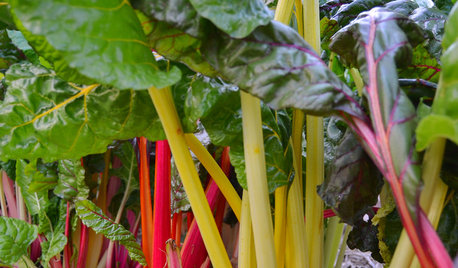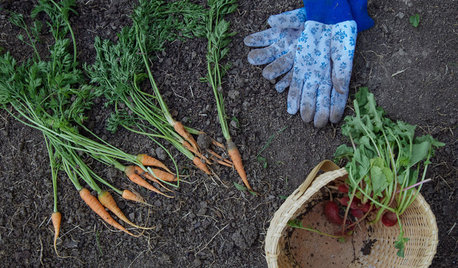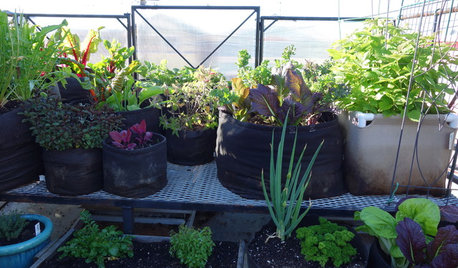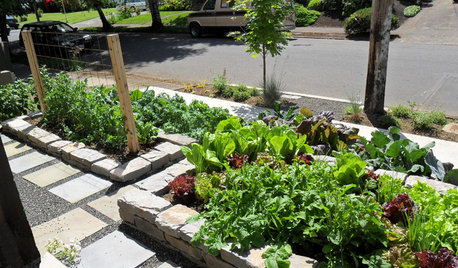Why does my chard do this?
champagne
13 years ago
Related Stories

GARDENING GUIDESCool-Season Vegetables: How to Grow Chard
A year-round garden favorite with a colorful stem, Swiss chard comes into its own in early spring and in fall
Full Story
FARM YOUR YARDHouzz Call: Home Farmers, Show Us Your Edible Gardens
We want to see where your tomatoes, summer squashes and beautiful berries are growing this summer
Full Story
FARM YOUR YARDMy Houzz: Backyard Farming for a Kansas City Family
A backyard garden provides a family of 5 with organic seasonal produce. Here's how they do it
Full Story
FARM YOUR YARDAn Urban Greenhouse Overflows With Edibles
Making meals just means stepping into the yard for a San Francisco couple who revamped an old orchid house
Full Story
GARDENING GUIDESEssential Watering Tips for Your Edible Garden
To give your edible plants just what they need, check out these guidelines for how, when and how much to water
Full Story
FARM YOUR YARDHow to Farm Your Parking Strip
Get an up-close look at a thriving street-side edible garden, one of many sprouting up in Seattle
Full Story
EDIBLE GARDENSSummer Crops: How to Grow Squash
Almost foolproof and with cheerful flowers, squash comes in a wide range of varieties to plant in spring
Full Story
FRONT YARD IDEASWelcome Edibles Into the Front Yard for Fresh Food and More
Give your front yard design a boost and maybe even make new friends by growing fruits and vegetables
Full Story
EDIBLE GARDENSGarden BFFs? Why Your Vegetables Are Begging for Companion Plants
Foster friendships among plants for protection from pests, pollination support and color camaraderie
Full Story
FRONT YARD IDEAS10 Ideas for a Front-Yard Edible Garden Your Neighbors Will Love
Choosing attractive, well-mannered plants and sharing the bounty will go a long way toward keeping the peace
Full Story








jojosplants
champagneOriginal Author
Related Professionals
Havre de Grace Landscape Architects & Landscape Designers · Parole Landscape Architects & Landscape Designers · Medford Landscape Contractors · Wakefield Landscape Contractors · Bowie Landscape Contractors · Choctaw Landscape Contractors · Deer Park Landscape Contractors · Lemay Landscape Contractors · Northbridge Landscape Contractors · Rochester Landscape Contractors · San Carlos Park Landscape Contractors · Weymouth Landscape Contractors · Hot Springs Village Decks, Patios & Outdoor Enclosures · Palm Beach Gardens Decks, Patios & Outdoor Enclosures · Agoura Hills Stone, Pavers & Concretegardenlen
jean001
champagneOriginal Author
riverfarm
champagneOriginal Author
jojosplants
champagneOriginal Author
jojosplants
jean001
hoodat
champagneOriginal Author
pksinan
jean001
organicdan
jean001
organicdan
briergardener_gw
champagneOriginal Author
scarlettfourseasonsrv
jean001
champagneOriginal Author